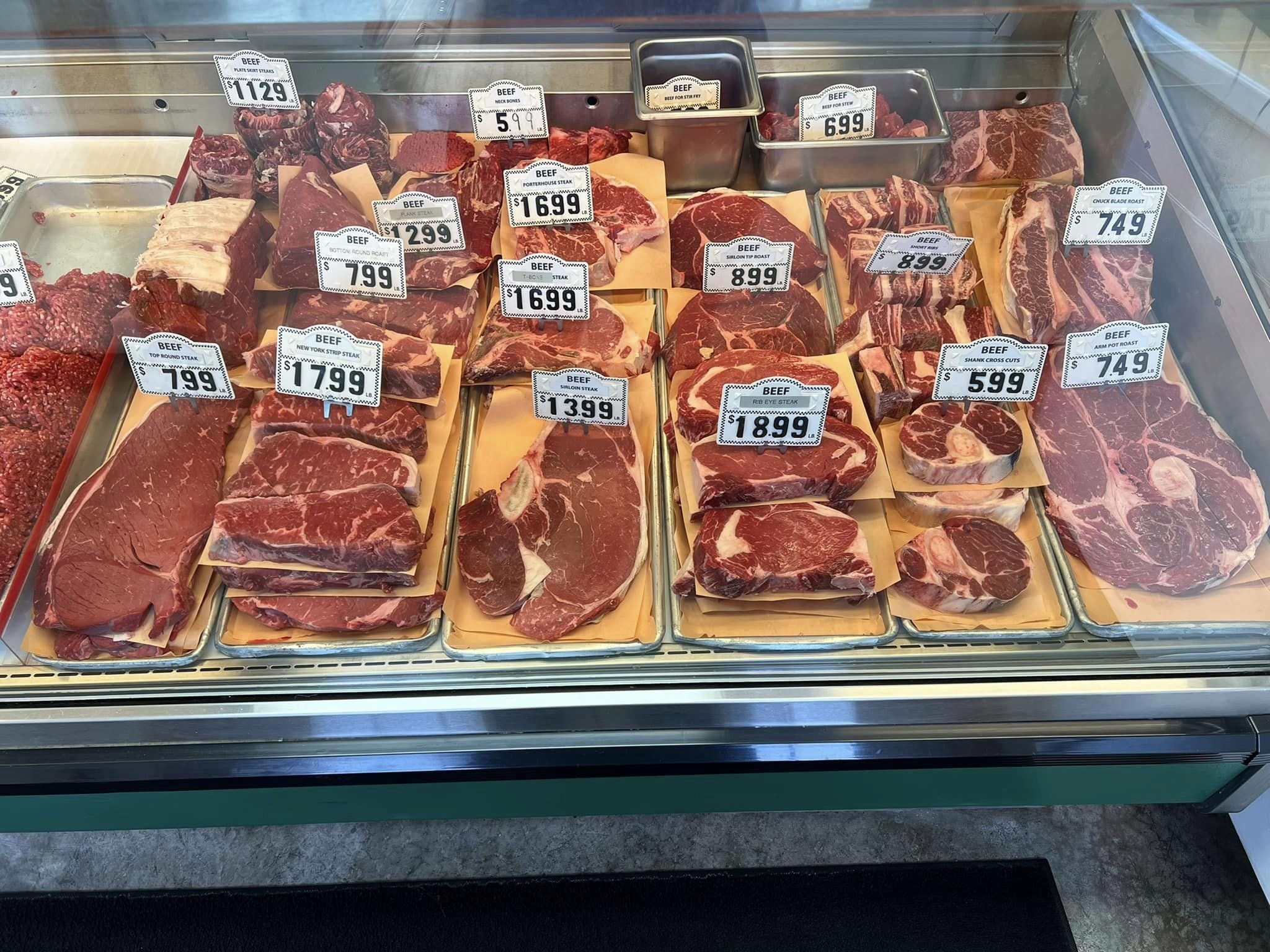What Makes Bagley Farms Meat Market Edwardsville IL Stand Out for Meat Lovers
Reveal the Art of the Butcher's Cut in a Modern Meat Market
In the ever-evolving landscape of modern meat markets, the butcher's cut has transcended its standard roots, merging old-time workmanship with modern practices. What truly sets the modern-day butcher apart is their capacity to create a deeper link in between consumers and the beginnings of their meat.
Advancement of Butchery Strategies

The mid-20th century saw butchery methods further fine-tuned by clinical insights into muscle mass biology and meat aging, improving both inflammation and taste. Innovations like vacuum cleaner product packaging and refrigeration extended product shelf-life, allowing butchers to expand offerings and enhance high quality control. This duration additionally noted the rise of specialized tools, such as band saws and meat slicers, which raised accuracy and efficiency in meat handling.
Digital systems now aid in tracking animal provenance and maximizing cuts to meet specific client preferences. Furthermore, a rebirth in artisanal butchery has arised, blending traditional skills with modern-day knowledge to cater to customers looking for moral and lasting meat options.

Comprehending Meat Cuts

Comprehending the details of meat cuts is vital for both butchers and customers seeking quality and value. For butchers, precise cuts reflect ability and respect for the craft, making sure marginal waste and optimum return.
The main classifications of meat cuts consist of primitive, sub-primal, and retail cuts. Primitive cuts, such as the loin, rib, and chuck, are the large sections at first separated from the carcass. Butchers then damage these down additionally into sub-primal cuts, prior to ultimately producing retail cuts readily available to consumers, like ribeye or tenderloin. Each phase calls for cautious interest to anatomical framework and muscle mass composition.
Comprehending muscle mass structure is essential; muscle mass made use of much more frequently by the pet tend to be tougher and are best matched for slow-moving food preparation methods, while less-used muscles, like those located in the loin, are extra tender and perfect for grilling or roasting. Knowledge with these differences empowers customers to make informed options, enhancing their cooking ventures.
Picking Top Quality Meat
Picking the best meat includes even more than simply picking a visually attractive piece from the screen. The art of selecting high quality meat needs a discerning eye and knowledge of details features that represent freshness and quality.
Second of all, consider the marbling, which refers to the white streaks of fat within the muscular tissue. Correct marbling is an essential indicator of tenderness and flavor, as it thaws during food preparation, boosting the meat's juiciness. Remember, higher marbling often correlates with exceptional top quality cuts, such as USDA Prime.
Structure is an additional critical element; meat needs to feel strong to the touch, not slimy or excessively soft. Furthermore, bear in mind the aroma. Fresh meat must have a tidy, neutral scent, without any type of sour or repulsive smells.
Coupling Cuts With Cooking Techniques
Successfully pairing cuts of meat with the suitable cooking techniques is essential for attaining optimum flavor and texture. These methods boost the meat's natural flavors and guarantee a juicy surface.
On the other hand, tougher cuts like brisket and chuck roast are rich in collagen, which damages down into gelatin when cooked gradually. These cuts are ideal for braising or sluggish roasting, allowing the meat to soften in time and establish deep, complex Visit Your URL tastes. Similarly, cuts such as short ribs and pork shoulder prosper with slow-cooking methods, where expanded cooking times change their robust appearances into delicious meals.
Lamb shanks and oxtail, which need right here long term cooking to soften, are perfect candidates for stewing or slow-moving simmering. These methods coax out rich, hearty flavors while keeping wetness. By understanding the one-of-a-kind characteristics of each cut, chefs and home chefs alike can raise their cooking developments, ensuring each meal is both pleasing and unforgettable.
The Butcher's Duty Today
Navigating the evolving landscape of the contemporary meat market, the butcher's role today prolongs beyond simple prep work of cuts. Contemporary butchers are cooking artisans, educators, and advocates for sustainable practices. They bridge the gap between the farm and the fork by making certain ethical sourcing, comprehending animal husbandry, and prioritizing transparency in the supply chain. This change reflects the growing consumer need for quality over amount, where provenance and animal well-being are extremely important.
In addition to crafting specific cuts, butchers now engage straight with customers, offering cooking advice and customizing options to suit private needs and choices. Their competence in meat aging, marbling, and flavor profiles equips customers to make educated choices, improving their culinary experiences. This tailored solution exemplifies the butcher's evolving duty as a trusted advisor in the cooking area.
Furthermore, butchers are critical in reducing waste, making use of entire animals to create varied items such as sausages and stocks - bagley farms meat visit the site market edwardsville il. This thorough technique not just appreciates the animal but additionally lines up with modern sustainability objectives. This way, the contemporary butcher symbolizes both practice and innovation, adapting to an ever-changing market while preserving the artistry and stability of their craft

Final Thought
Proficiency in comprehending diverse meat cuts and top quality indications empowers butchers to provide informed referrals, aligning specific cuts with optimal cooking techniques. By honoring historic methods while accepting contemporary needs, the butcher's duty continues to be important in today's advanced meat market.